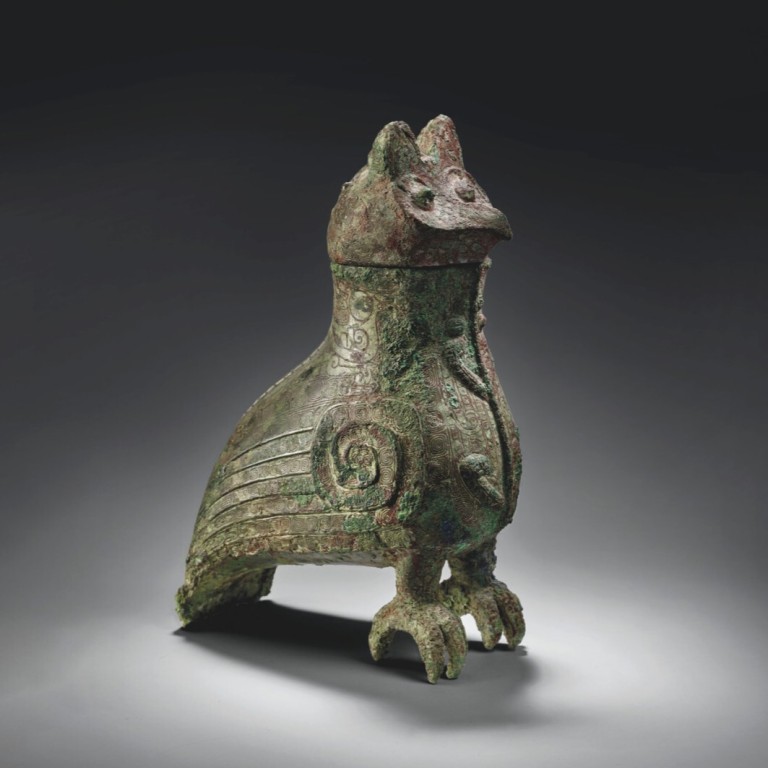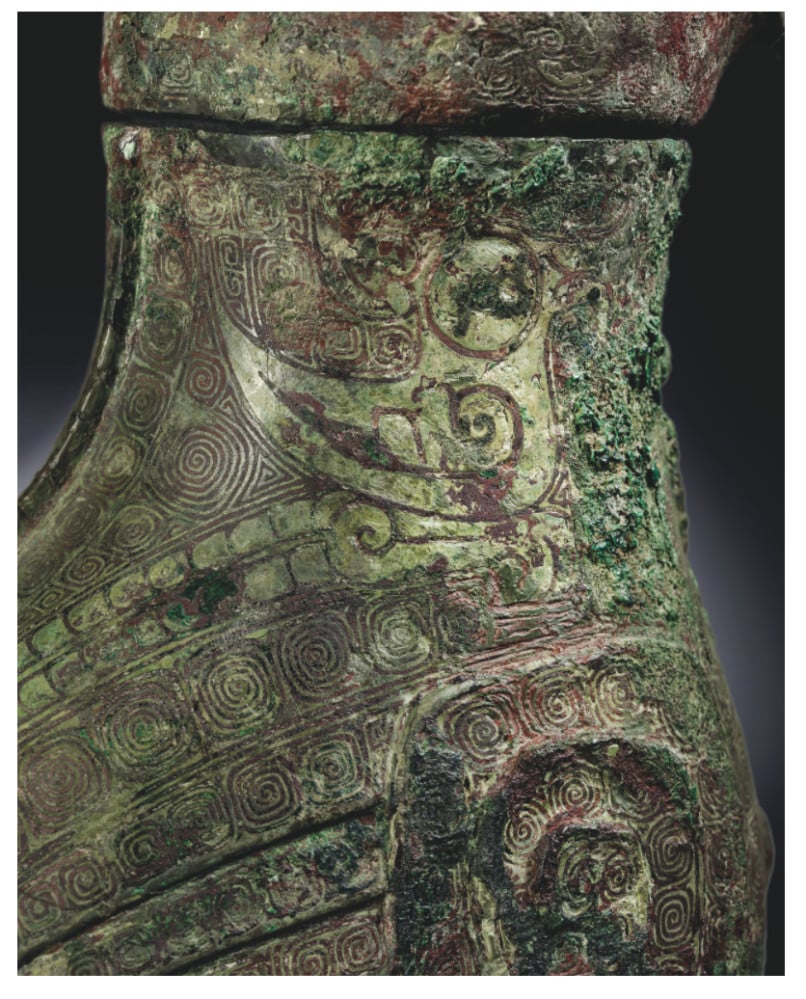
A 3,500-year-old Chinese bronze owl-shaped wine jar sells for over US$1.5 million at Christie’s auction
- Called a zun, the jar was probably used by Shang dynasty aristocrats during important ceremonies
- It is also similar to two owl zuns found in the tomb of Lady Fuhao, an iconic figure in Chinese history
A rare bronze Chinese wine jar that may be upwards of 3,500 years sold for US$1.52 million at a Christie’s online auction on Wednesday.
Tiphaine Nicoul, the head of Christie’s Asian art department, speculated that the piece could have belonged to royalty.
“This bronze is very close in style, quality, structure and design to bronzes found in royal tombs so we think that this piece was made for an important, high-ranked person, or even a member of royalty,” she said.

It is nearly identical to a zun excavated from Shang-era Xibeigang royal tombs in the central province of Henan.
It is also similar to two owls found at the tomb of Lady Fuhao excavated in 1976. Fuhao was the first known female general in Chinese history and is a towering figure from ancient China.
Robert D. Mowry, a curator of Chinese arts for Harvard Art Museums, wrote for Christie’s: “Though its exact function remains unknown, one can picture it resting majestically on an altar and containing the wine that would be used in the ceremonies.”
Animal-shaped artefacts are common in Shang dynasty relics, including an iconic rhinoceros zun housed at the San Francisco Asian Art Museum and a ram-inspired container that sold for US$27.1 million in 2017.
Owls in particular have a long history in Chinese art, and archaeologists have discovered examples of neolithic clay depictions of the nocturnal bird.
As China transitioned into the bronze age around 2000BC, metallurgy became a common method to make ritual objects, particularly for eating and drinking. Owls adorn many of the artefacts, suggesting particular importance in the Shang dynasty society, according to Wang Tao writing for Sotheby’s.
One of China’s most important modern historians, Hu Houxuan, suggested that the owl may have been the most sacred animal during the Shang dynasty.
Historians have argued that Shang dynasty people may have associated owls with mythology because of the belief that the people descended from a “mythical black bird”, which some say was an owl.
Mowry wrote: “The historian and archaeologist Liu Dunyuan has contended that the Shang people perceived the owl as the god of night and dreams, as well as the messenger between human and spirit worlds.”
We think that this piece was made for an important, high-ranked person, or even a member of royalty.
Tao said that this interconnection between the living and spirit worlds is shown by the presence of owls at the gates of Shang-era tombs.
The bronze owl was also in remarkably good shape considering its age. Nicoul said the high-quality condition was because it had been underground for a long time, and “the owl has been on long term loan to a museum since the 1940s, and as such has not often been seen publicly and therefore was not exposed to any potential risk.”
The owl on sale sits upright and is considered a “realistic model” based on its claws and tail. The wings are depicted using an ancient Chinese line-drawing style called a leiwen. It also includes a partially visible inscription under the bird’s body.
The owl’s head is the lid of the zun, with two ears pointing upwards and large round eyes transitioning into a rounded beak.


